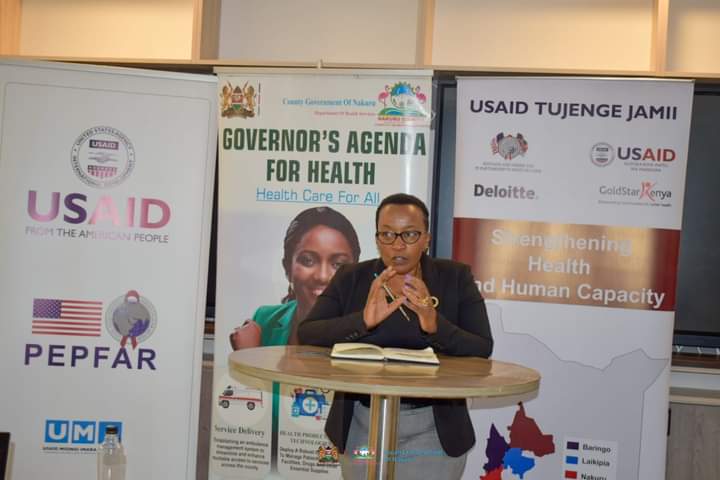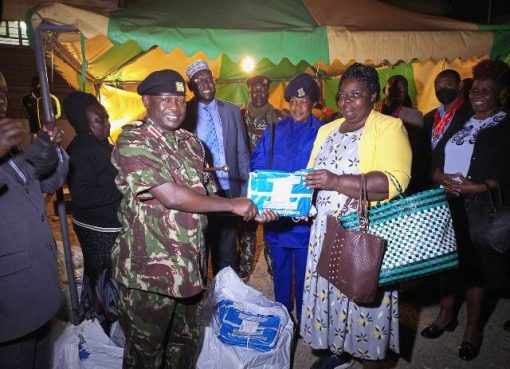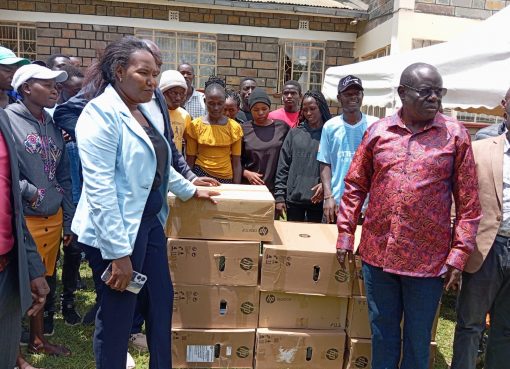Nakuru County has started restructuring healthcare delivery through a programme dubbed Workload Indicators of Staffing Needs (WISN) that seeks to effectively manage available human resources across the County’s health facilities.
The department of Health Services has already embarked on sensitizing key stakeholders on the roll out plan in an effort to bring them on board and mobilize their support in implementing the programme.
Health County Executive Committee Member (CEC) Roselyn Mungai said that the department was confident of a successful roll out of the programme across the County’s facilities while ensuring effective utilization of the available human resources.
WISN is a facility-based scientific method from the World Health Organization that uses health workers’ workload and activity (time) standards to determine staff requirements, an approach that takes into account differences in services provided and the complexity of care in different facilities.
The WISN calculation of staff requirements is based on the same medical standards in all similar facilities, ensuring consistency and fairness in staffing decisions.
While commissioning the rollout programme, Ms Mungai noted that the initiative would revolutionize staffing decisions, optimize healthcare workforce management, and enhance productivity to meet the needs of Nakuru residents.
She added that the next phase would incorporate training of the County Health Management Team members and at the same time cascade the WISN methodology, ensuring that every level of the healthcare system benefits from this innovative approach.
“This initiative is part of our ongoing efforts to collaborate with like-minded partners and mobilize resources for better health services for all residents and I want to particularly thank USAID Tujenge Jamii, USAID Misingi Imara and Thinkwell for complementing our efforts in this,” said Ms. Mungai.
The WISN method calculates the number of health workers per cadre, based on health facility workload and provides two indicators to assess staffing, namely the gap/excess between current and required number of staff, and a measure of workload pressure.
According to the World Health Organization (WHO), WISN user manual of November 2023, health workforce is the pivot on which health system performance relies and therefore human resources for health is a strategic area of focus crucial to affordable, accessible and high-quality health services.
The report further says that the ability of a country to meet its health commitments and goals largely depends on the number, skills, competencies and availability of health workers, and on whether those workers are organized and equitably distributed to deliver integrated, people-centered health services.
WHO noted that the health workforce was essential to achieving universal health coverage and the Sustainable Development Goals and especially those related to “health workforce density and distribution” and improved data on human resources for health.
According to the report, health service managers around the world face increasing human resource challenges, such as inadequate resources to respond to the populations’ demand for services, uneven distribution of human resources and especially a poor balance between urban and rural areas, and between primary, secondary and tertiary levels of care.
Other challenges noted included inefficiencies due to uncoordinated HR practices from various stakeholders and poorly coordinated mechanisms for health information systems.
The Workload Indicators of Staffing Needs principle has long been used in business but was not employed in the health sector until the late 1990s, when the WISN method was field tested and used in several countries.
By Jane Ngugi





